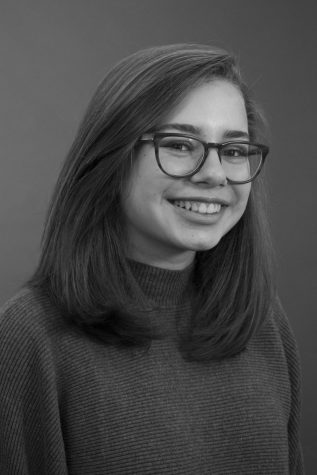CRLS Discusses Microaggressions
January 30, 2018
“We made that video so we could speak our truth,” says Na-Jae Josephs, a senior in the Black Student Union at Cambridge Rindge and Latin. Josephs is referring to a video the Black Student Union (BSU) released on December 5th, titled, “Cambridge’s Minority Report: Volume 1 (2017).” The video featured several Rindge students sharing micro and macro aggressions they have experienced at CRLS and was shared on YouTube.
The video struck a chord with a lot of CRLS students and staff, sparking conversations in all corners of the building—especially when the topic of that week’s X-Block was microaggressions. While the video did not include any names of those perpetrating microaggressions, the identity of the perpetrator could be narrowed down.
Mr. Montero, a U.S. history teacher, reacted to the video, saying, “I think it’s my job to listen to it and watch it regularly, and remind myself that I carry a lot of privilege and that I carry a lot of responsibility to all of my students, but especially my students of color, to make them feel safe and loved in my classroom.”
The video was not shown in the X-Block. While some students seem to understand this administrative decision, many felt disappointed or frustrated that it was not included as part of the X-Block’s curriculum. Sophomore Zoë Haber says, “I would have liked to have seen [the BSU video in the X-Block], because I personally had watched the video beforehand … [and not seeing the video] made the discussion feel like it was about microaggressions in general instead of microaggressions at our school.”
The X-Block was narrated by Principal Smith and featured two videos: “Racial Microaggressions: Comments That Sting” and “Hatch Kids Microaggressions.”
Mr. SebellShavit, a physics teacher, did not think the video should have been shown, but agreed with Haber that it should have been acknowledged. He says, “Staff and students were very aware of this video and were very charged by it, and I think to not discuss it at all left a lot of people feeling, ‘where’s the student voice?’ and ‘why are we watching someone else’s microaggression video when we already have our own microaggression video?’”
A student in the BSU video, Elaina Wolfson ’18, echoed the concerns of Mr. SebellShavit, saying, “We should be talking about how microaggressions affect our community. Not [how they affect] Harvard Square, but [how they affect] Rindge. [An X-Block] is supposed to be community conversation, but we’re not talking about our community. Not America—but Cambridge.”
Wolfson said the BSU was inspired to make the video when students in the organization kept sharing their stories and it became clear that their stories weren’t isolated incidents, but, rather, a major problem within the school. Wolfson, towards the end of the video, became emotional speaking of her experience. She explained, “We’re in a school where we’re like, ‘students can advocate for themselves,’ ‘start a club,’ ‘do this,’ and I’m just like, I did—and [there hasn’t been enough progress].”
Josephs believed the X-Block was, overall, a positive experience. However, immediately following the homeroom conversations, he heard fellow students discussing how students of color should “get over it.” Josephs then recognized that a crucial component was missing from the X-Block discussion—relevance.
He, like Wolfson, believes a more specific approach would benefit the discussion, and make it more relevant to students who have not experienced discrimination. He says, “I feel that if we were to just address the problem head-on and talk about how we, as a community, can speak up more about these injustices, then we wouldn’t have to hear comments about how we need to get over it—because, frankly, we can’t.”
As for preventing future microaggressions, Wolfson emphasized the heavy lifting that CRLS has to do to prevent discrimination—especially when it’s subtle—saying, “It’s really easy to condemn racism and microaggressions when they’re far away, but when it’s right there in front of you, it’s really hard to.”
The administration is, however, trying to confront what is in front of them. “‘Student Reporting Form’ is what it’s called,” said Ms. Espinosa, dean of Learning Community C, of the new form that students will be able to fill out. While it is not accessible yet, the form is an alternative to the incident report format—which is meant for a one-time incident or a conflict between two individuals. “It could be an ongoing cultural incident that you feel is going on in the classroom, or repeated incidents that you want to speak of,” Ms. Espinosa said of the new form.
Ms. Espinosa also mentioned what the staff has been doing to better address the concerns of students, saying, “We’ve had training around cultural proficiency, which is a big blanket statement or blanket idea, but it does have to do with our continuous work with building relationships with students.”
She emphasized creating stronger relationships in classrooms and promoting an environment where students and teachers feel they can learn from each other: “It’s about building relationships and understanding what microaggressions are, and how to redeem yourself—how to learn from it. You screwed up; you said something you didn’t know that’s microaggressive, and now what? So, ideally, it’s education around not repeating history.”
This piece also appears in our January print edition.










